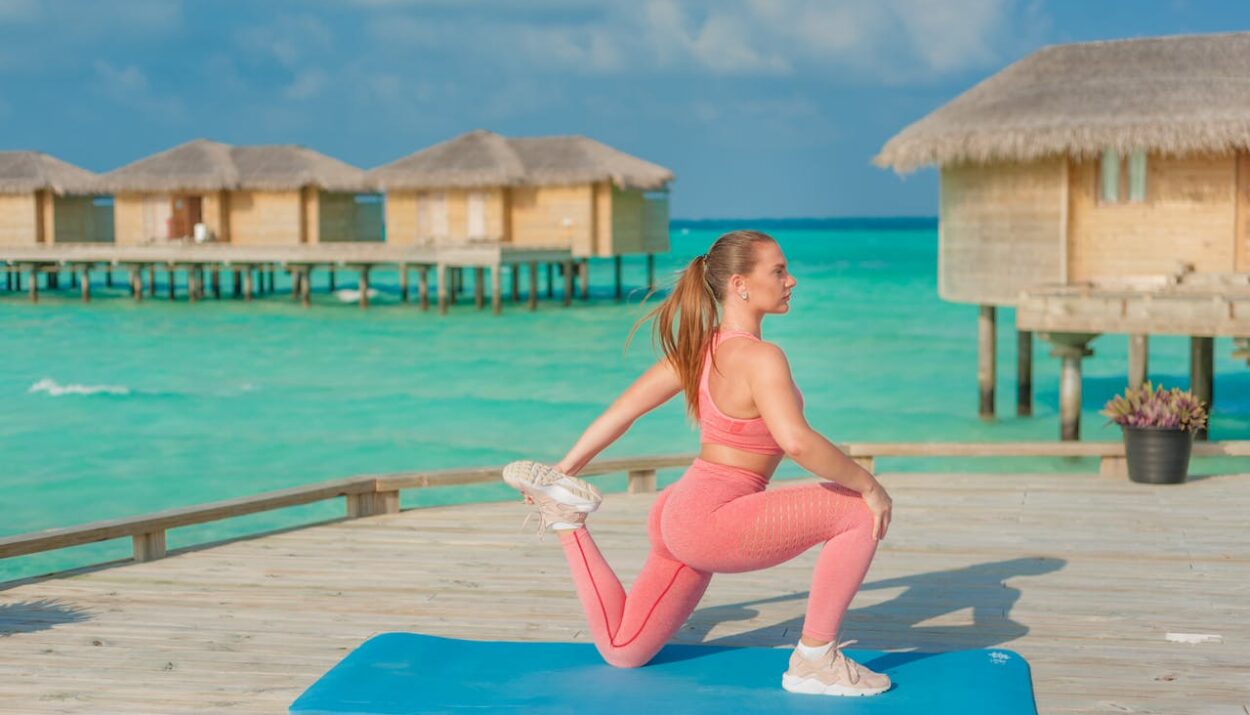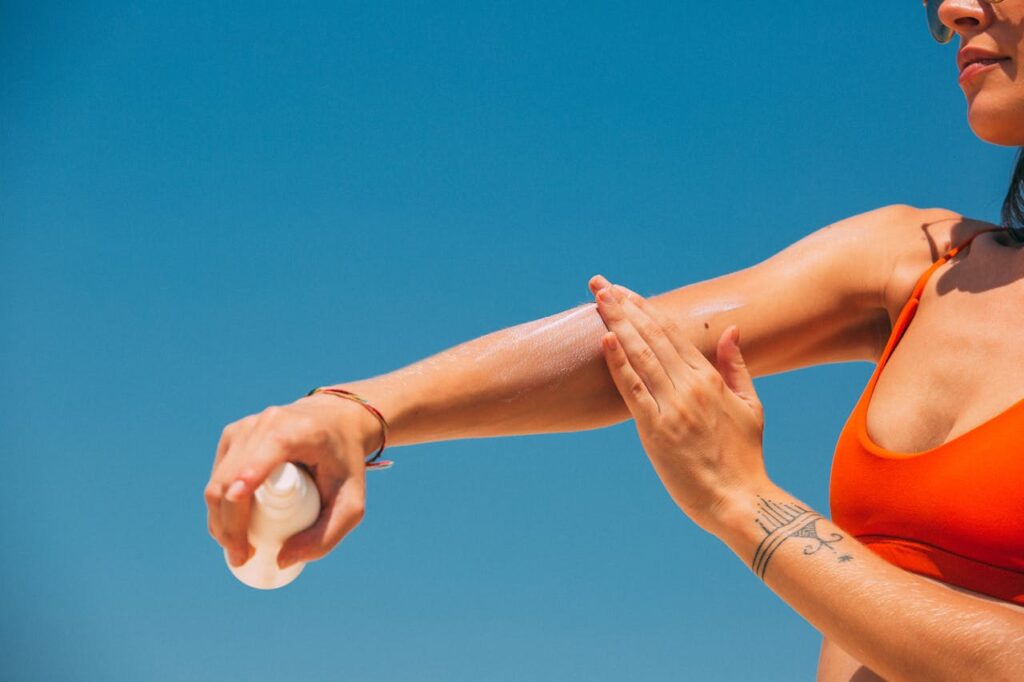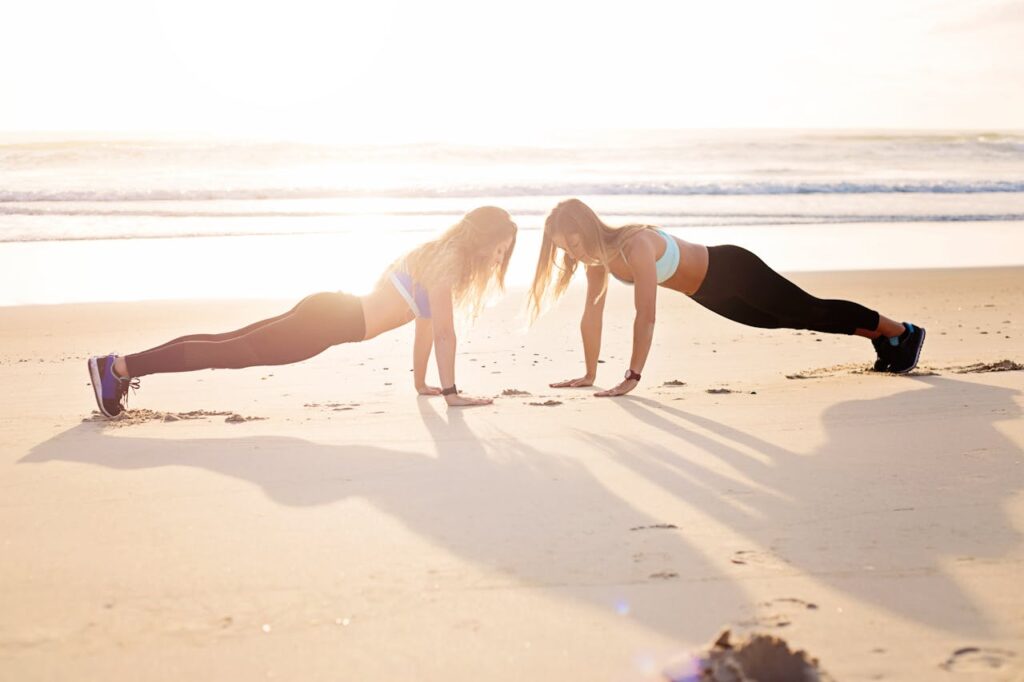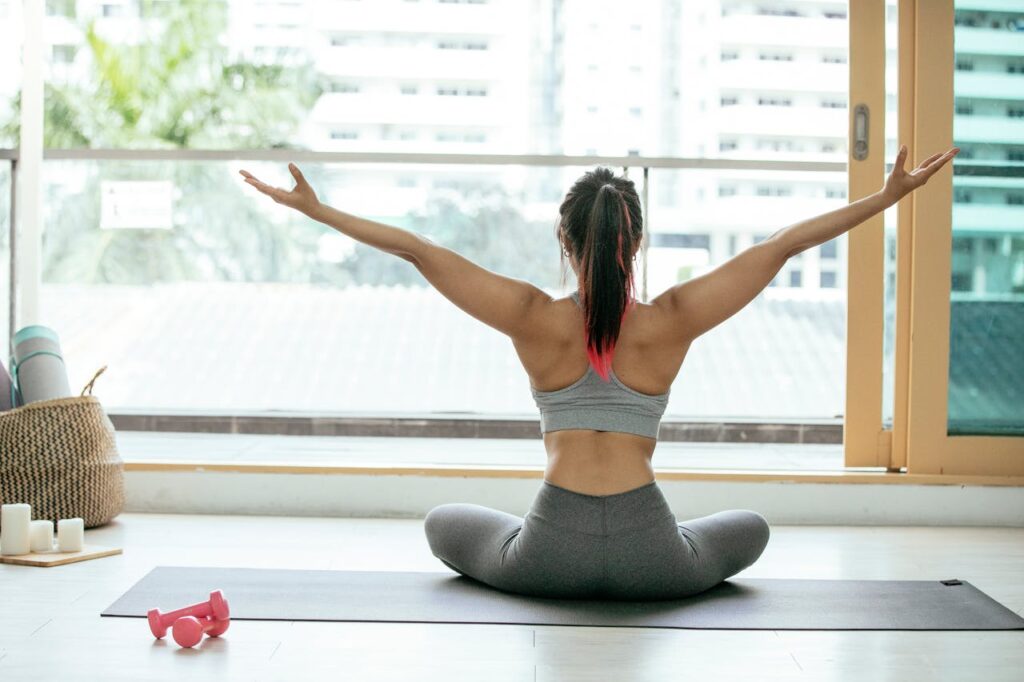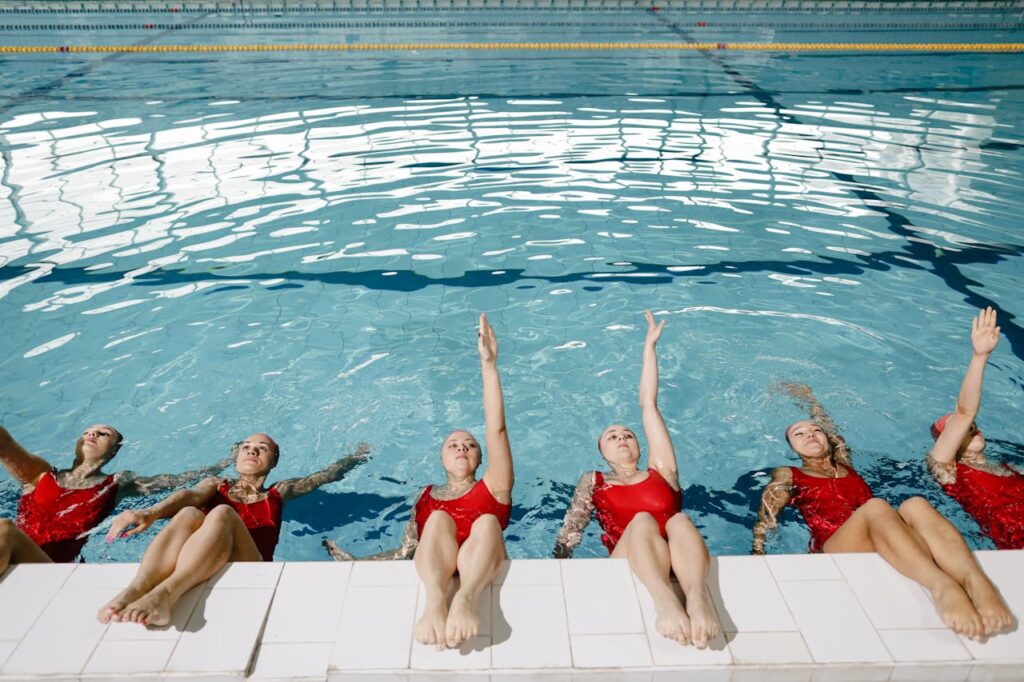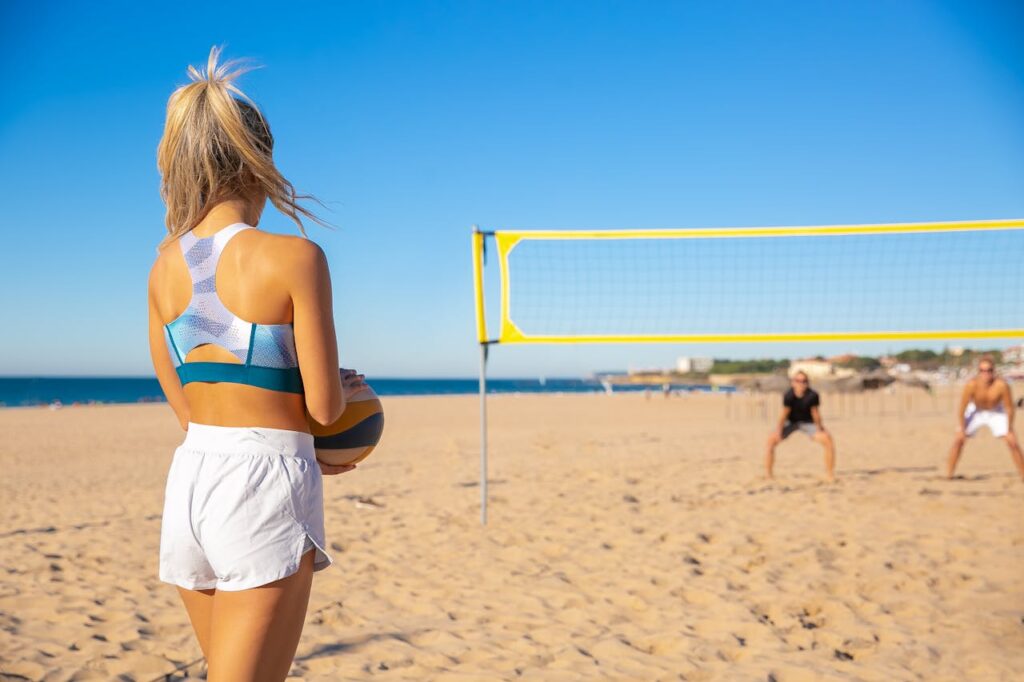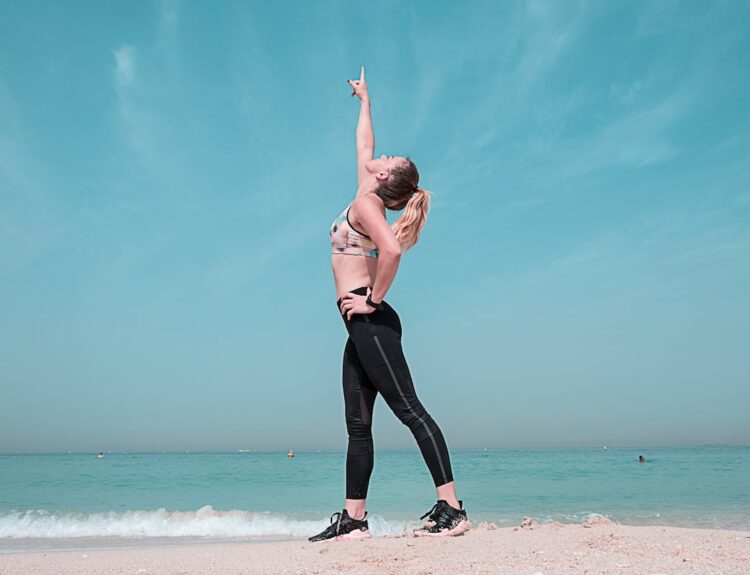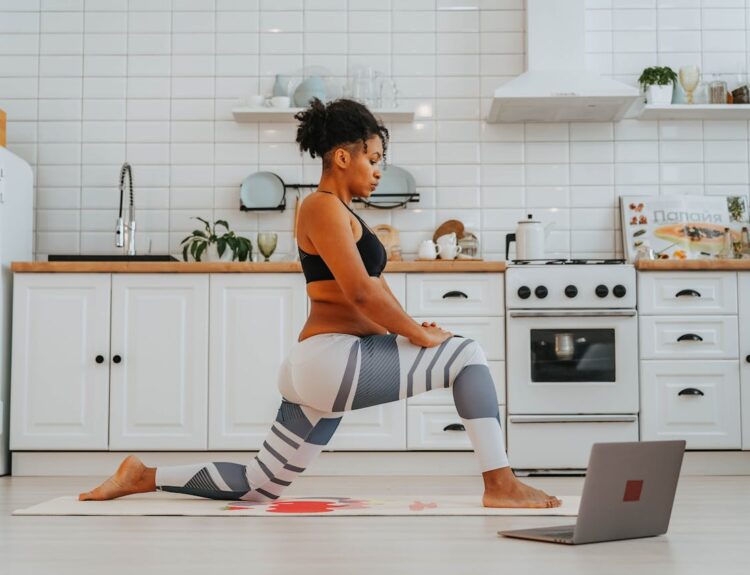Working out with a sunburn can present unique challenges. Sunburns can cause skin irritation, discomfort, and even severe health complications if not adequately managed. It’s essential to approach exercise cautiously when dealing with a sunburn to avoid worsening the condition. This article provides valuable tips on safely exercising with a sunburn, including which activities to avoid, the best workout options, and effective post-workout care strategies. By following these recommendations, you can maintain your fitness routine while ensuring your skin heals properly.
Discover essential tips for working out with a sunburn. Learn which activities to avoid and effective post-workout care strategies.
In this article:
- Understanding Sunburn and Its Effects
- Can You Work Out with a Sunburn?
- Working Out with a Sunburn: Indoor vs. Outdoor
- Working Out with a Sunburn: Safe Exercises
- Working Out with a Sunburn: Activities to Avoid
- Post-Workout Care for Sunburned Skin
UNDERSTANDING SUNBURN AND ITS EFFECTS
A sunburn is skin damage caused by excessive exposure to ultraviolet (UV) radiation, typically from the sun. It occurs when the skin’s outer layers absorb too much UV radiation, resulting in redness, inflammation, and sometimes blistering. The severity of a sunburn can vary from mild redness and discomfort to severe pain, swelling, and blistering. Immediate symptoms of sunburn include red, tender skin that is warm to the touch, which can develop within a few hours of exposure.
Sunburn affects the body in several ways, extending beyond the visible skin damage. Firstly, it can cause dehydration, as the body loses moisture through the damaged skin. This dehydration may lead to fatigue, dizziness, and an overall sense of being unwell, impacting physical performance and exercise capacity. Additionally, sunburn impairs the skin’s ability to regulate temperature, making it challenging to stay cool during physical activity.
The inflammation associated with sunburn not only causes visible symptoms but also triggers an immune response. This immune response may lead to symptoms such as fever, chills, and nausea in severe cases. These symptoms can significantly reduce the ability to perform physical tasks and may require medical attention.
If you plan to work out with a sunburn, consider these effects to make decisions about exercise and manage physical activity safely to avoid further harm.
CAN YOU WORK OUT WITH A SUNBURN?
Exercising with a sunburn can be challenging and uncomfortable, but it is not always impossible. The decision to work out depends on the severity of the sunburn and how your body feels. Mild sunburns, characterized by slight redness and tenderness, may not significantly interfere with physical activity.
For mild sunburns, consider opting for low-impact exercises that do not cause excessive sweating or friction on the affected areas. Walking, gentle yoga, or light stretching can be suitable options. These exercises help maintain physical activity without exacerbating the sunburn symptoms. Always wear loose, breathable clothing to minimize irritation and protect the sunburned skin from further UV exposure by exercising indoors or during early morning or late evening hours.
Moderate to severe sunburns, which include symptoms like intense redness, swelling, blistering, or significant pain, require more caution. In these cases, avoiding activities that could lead to overheating, dehydration, or increased discomfort is advisable. The body’s immune response to severe sunburn can also cause systemic symptoms like fever, chills, and fatigue, further impairing physical performance.
The key to exercising with a sunburn is to prioritize your health and comfort. If your sunburn is severe or if you experience any systemic symptoms, it is best to rest and allow your body to heal. Listening to your body and avoiding pushing yourself too hard is crucial.
WORKING OUT WITH A SUNBURN: INDOOR VS. OUTDOOR
Deciding between indoor and outdoor workouts can significantly impact your comfort and recovery, especially when dealing with a sunburn.
Indoor Workouts
Indoor exercise environments offer a controlled setting free from additional UV exposure, which could exacerbate your sunburn. Avoiding direct sunlight reduces the risk of further skin irritation and aids healing. Gyms, home workout spaces, and indoor pools provide various exercise options like yoga, Pilates, and swimming. These activities can be performed in a cooler environment, minimizing the risk of overheating and additional stress on your body. Indoor settings often offer amenities such as air conditioning and fans to keep you comfortable during workouts. Wearing loose, breathable clothing indoors helps minimize friction in sunburned areas, promoting comfort and faster recovery.
Outdoor Workouts
While outdoor workouts can be enjoyable, they pose significant risks for individuals with sunburn. Sun exposure can worsen skin damage and increase the risk of overheating and dehydration. If you prefer outdoor exercise, opt for early morning or evening sessions when the sun’s rays are less intense. Choose shaded areas, wear protective clothing, and apply high-quality sunscreen to shield your skin from further UV damage. Low-impact activities such as walking or gentle cycling are preferable to high-intensity workouts that generate excessive heat and sweat.
Prioritizing your skin’s health and comfort is essential when selecting your workout environment. Whether indoors or outdoors, listen to your body and choose activities that support your recovery while allowing you to maintain a healthy level of physical activity.
WORKING OUT WITH A SUNBURN: SAFE EXERCISES
Exercising with a sunburn requires caution to prevent exacerbating skin irritation and discomfort. However, there are safe workout options available to maintain physical activity levels without causing further harm:
- Low-Impact Cardiovascular Exercises: Walking, stationary cycling, and elliptical machines provide cardiovascular benefits without excessively stressing the skin.
- Gentle Stretching and Yoga: Engage in stretching or yoga routines focused on flexibility and relaxation. Avoid poses that directly contact or apply pressure to sunburned areas.
- Water-Based Activities: Consider swimming or aqua aerobics, benefiting from the water’s buoyancy that reduces skin impact. Ensure proper pool chlorine levels to prevent further irritation.
- Mind-Body Activities: Explore tai chi or qigong for relaxation, balance, and mindfulness. These gentle exercises provide holistic fitness while minimizing stress on sunburned skin.
Remember to listen to your body and stop any exercise that causes pain or discomfort. Throughout your workout routine, prioritize your skin’s health and comfort.
WORKING OUT WITH A SUNBURN: ACTIVITIES TO AVOID
Exercising with a sunburn demands careful consideration to prevent further irritation and complications. While maintaining physical activity is essential for overall health, avoiding certain activities is crucial to safeguard against exacerbating sunburn symptoms. Here are some activities to steer clear of when working out with a sunburn:
- High-Impact Exercises: Activities involving repetitive movements or impact, such as running, jumping, or high-intensity interval training (HIIT), should be avoided. These exercises can cause friction and irritation on sunburned skin, leading to increased discomfort and potentially delaying healing.
- Weightlifting: Lifting heavy weights or having strenuous resistance training can strain sunburned muscles and skin, causing further inflammation and discomfort. Skip weightlifting sessions until the sunburn has healed to prevent unnecessary stress on your body.
- Outdoor Sports: Participating in outdoor sports that involve prolonged sun exposure and physical contact, such as soccer, volleyball, or basketball, can worsen sunburn symptoms. Direct sunlight can intensify skin irritation, and the friction from sports activities can further aggravate the burn. Opt for indoor sports or low-contact alternatives until the sunburn heals.
Avoiding these activities and opting for gentle, low-impact exercises will help you effectively manage your sunburn and promote faster healing while maintaining your fitness routine.
POST-WORKOUT CARE FOR SUNBURNED SKIN
After your workout, tending to your sunburned skin is essential for recovery and comfort. Hydration is vital, so replenish lost fluids by drinking plenty of water or electrolyte-rich beverages.
Once you’ve cooled down, shower gently, avoiding hot water that could further irritate the skin. Avoid harsh soaps or lotions that could aggravate the skin. Opt for mild, fragrance-free alternatives for sensitive or sunburned skin.
Once gently patting your skin dry with a soft towel, apply a moisturizer or the soothing aloe vera gel to help hydrate and alleviate discomfort. Opt for products with gentle, non-irritating ingredients to avoid exacerbating the sunburn. Choose loose, breathable clothing to allow your skin to breathe and prevent further irritation.
After applying skincare products, protect your skin from further damage by avoiding prolonged sun exposure. Stay indoors or seek shade, especially during peak sun hours.
Follow these post-workout care tips to alleviate sunburn symptoms and promote healing for healthier skin.
_____
Working out with a sunburn requires a delicate balance between maintaining your fitness routine and ensuring your skin’s health and recovery. You can exercise safely without exacerbating sunburn by selecting appropriate low-impact exercises, avoiding high-intensity activities, and following practical post-workout care tips. Remember to stay hydrated, protect your skin from further sun exposure, and listen to your body to avoid further irritation.
This post may contain affiliate links. You can read the affiliate disclosure here.

